Explorers ventured into Belize’s Giant Blue Hole in 2018. Richard Branson led the expedition with Fabien Cousteau and Erika Bergman.
They aimed to create a 3D map of the interior. The Blue Hole is the world’s largest sinkhole, measuring 300 meters across and 125 meters deep.
Breathtaking Stalactites Discovered First
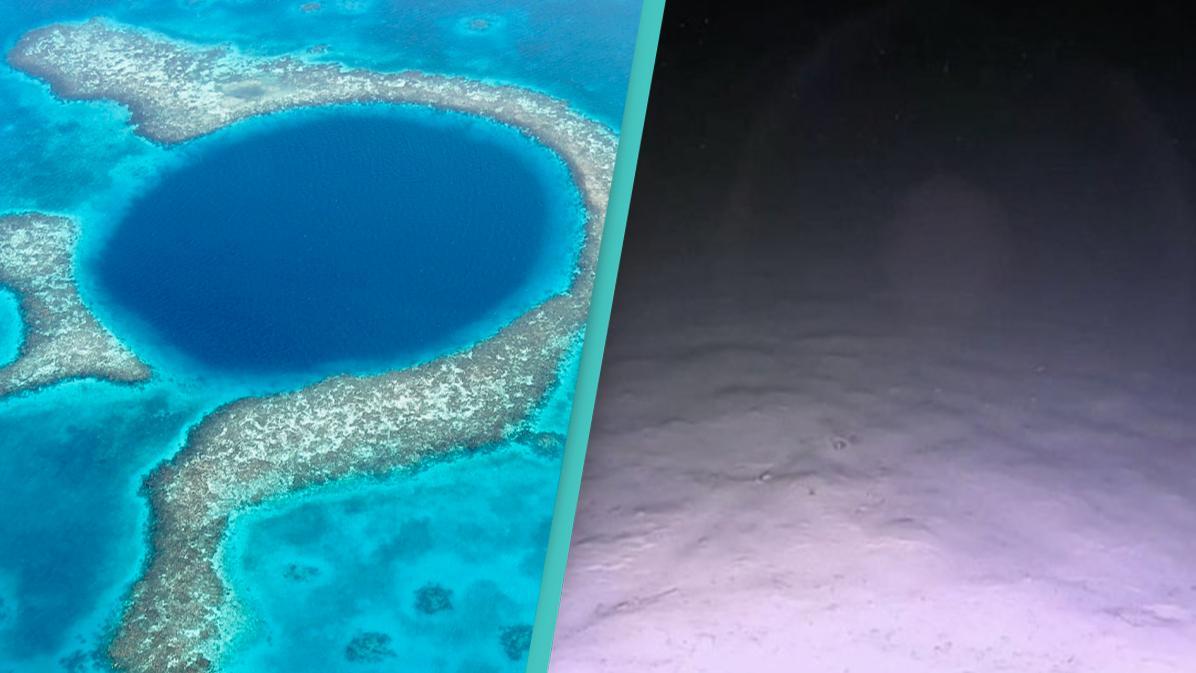
The team encountered giant stalactites at the beginning of their descent. Branson described these formations as “breathtakingly beautiful.”
Stalactites form over thousands of years as mineral-rich water drips from cave ceilings. Some stalactites in the Blue Hole are estimated to be over 150,000 years old.
Toxic Layer Pierced Midway
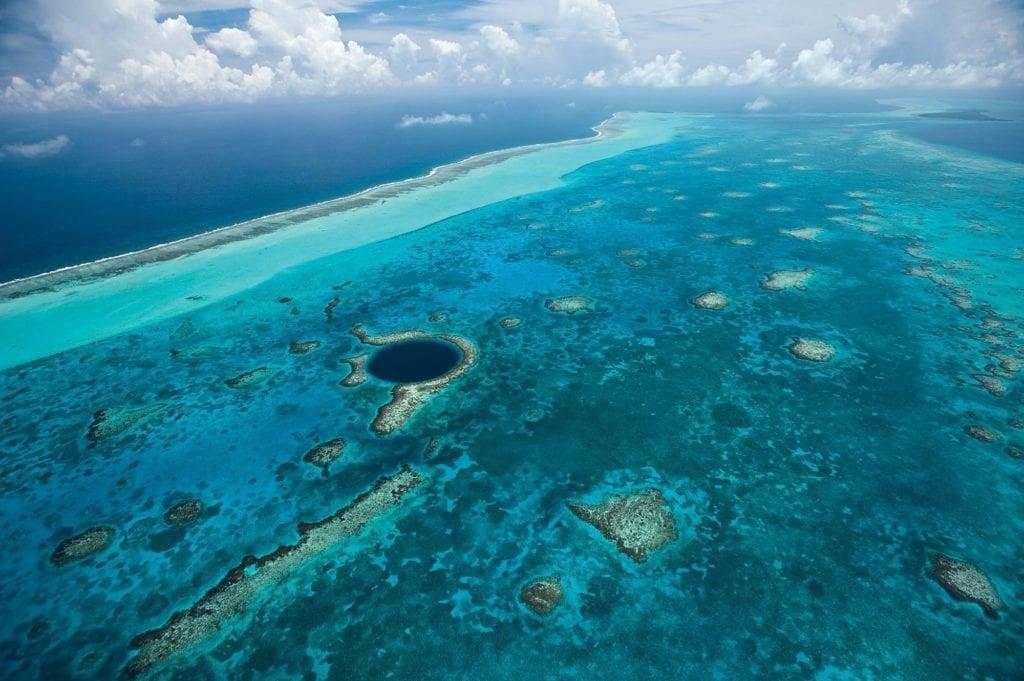
At around 300 feet, the explorers penetrated a thick hydrogen sulfide layer. This toxic substance cut off oxygen and sunlight.
The layer forms naturally over centuries due to bacterial decomposition. Hydrogen sulfide can be lethal to humans in high concentrations.
Eerie Darkness Envelops Explorers
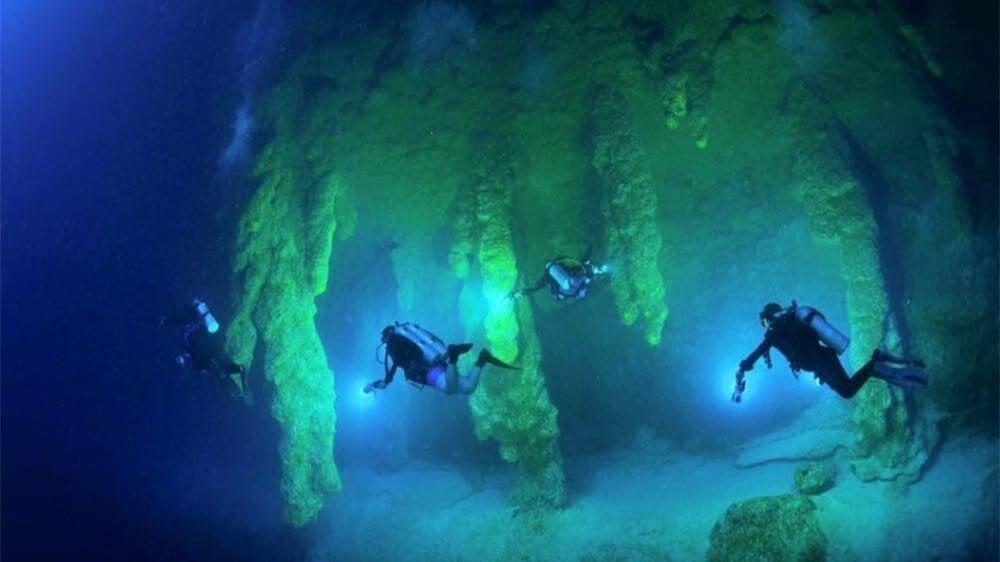
Below the hydrogen sulfide layer, complete darkness surrounded the team. Bergman described losing all Caribbean sunlight at this point.
The absence of light creates a unique ecosystem in the deeper parts of the hole. Many deep-sea creatures have evolved to live without sunlight.
Dead Sea Creatures Found
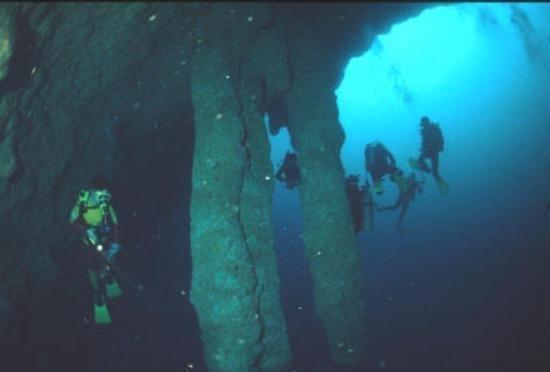
The team observed deceased marine life at the bottom. Crabs, conches, and other creatures had fallen in and suffocated.
The lack of oxygen at these depths is inhospitable to most life forms. The Blue Hole’s depth reaches about 410 feet at its deepest point.
Human Remains Respectfully Noted
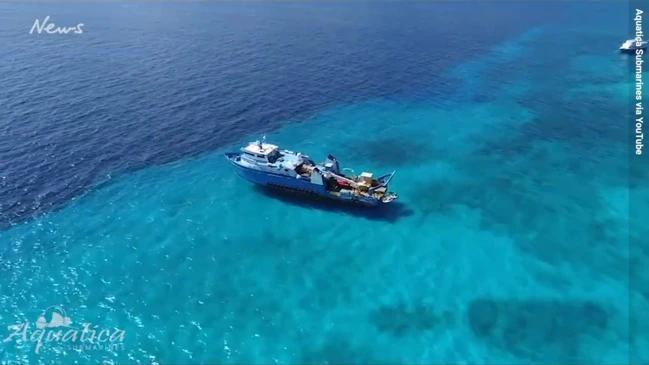
Explorers discovered the bodies of two people in the hole. They informed the Belize government of the location but did not attempt recovery.
Diving accidents in blue holes are not uncommon due to their depth and complex structure. Since 1970, over 130 diving fatalities have been recorded in blue holes worldwide.
Unexpected Trash Mars Beauty
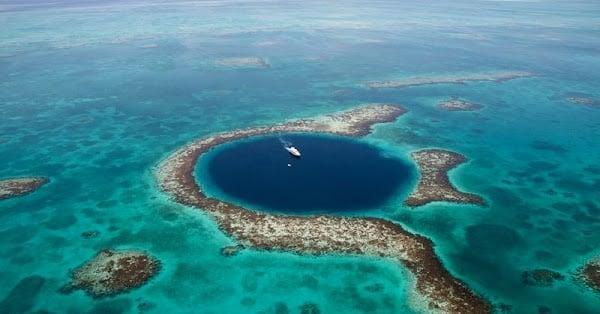
The team found human rubbish at the bottom. Items included a Coke bottle and a lost GoPro camera.
Marine debris is a growing problem, with an estimated 8 million metric tons entering oceans annually. Plastics can take hundreds of years to decompose in marine environments.
Climate Change Evidence Observed
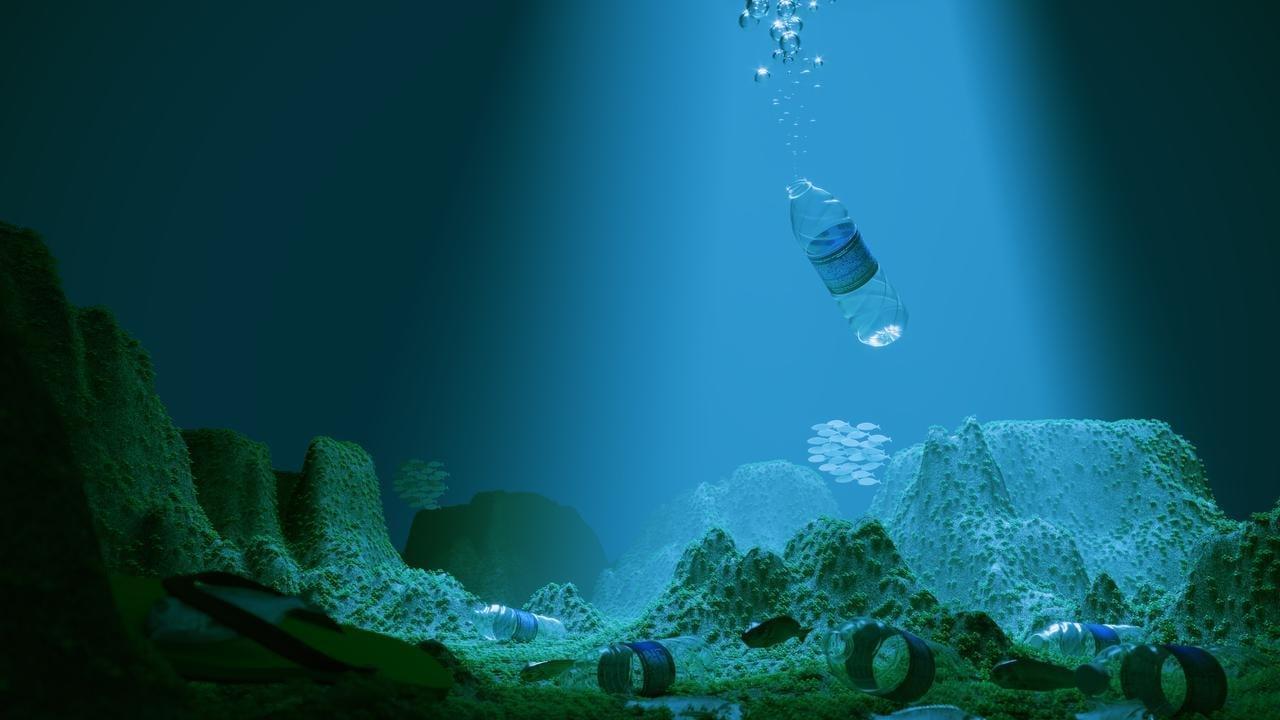
Branson noted stark reminders of climate change during the dive. The Blue Hole’s formation indicates past sea level changes.
Sea levels rose approximately 120 meters over the past 20,000 years as ice melted globally. Current sea level rise is occurring at about 3.3 mm per year.
Ancient Cave System Revealed
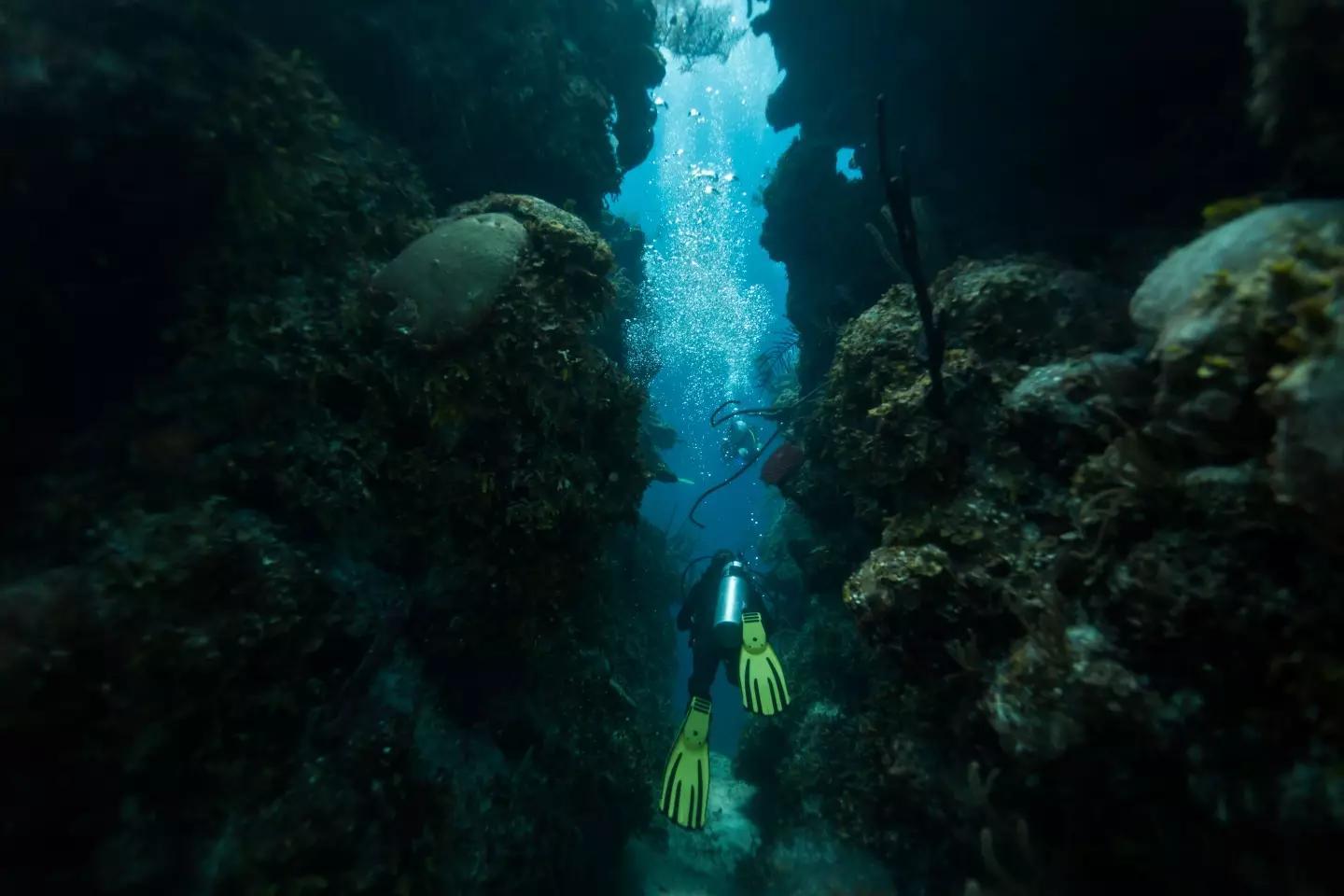
The Blue Hole was once a dry land cave system. It formed during past ice ages when sea levels were lower.
The last major ice age ended about 11,700 years ago. During this period, sea levels were up to 120 meters lower than today.
Ocean Protection Urgency Highlighted
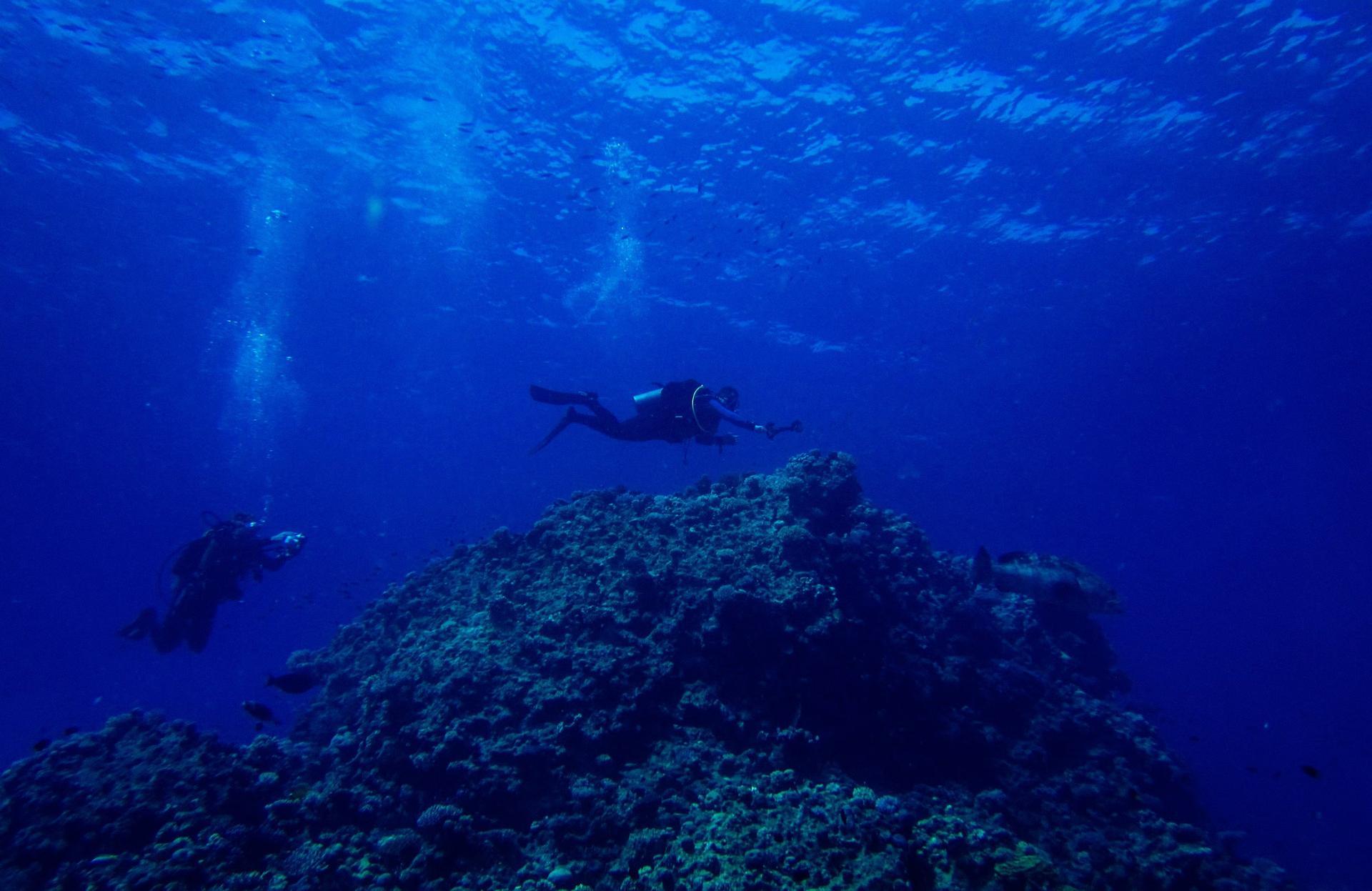
The expedition raised awareness about ocean protection needs. Branson emphasized the importance of tackling climate change immediately.
Coral reefs, which surround the Blue Hole, are particularly vulnerable to climate change. About 50% of the world’s coral reefs have died in the last 30 years.

